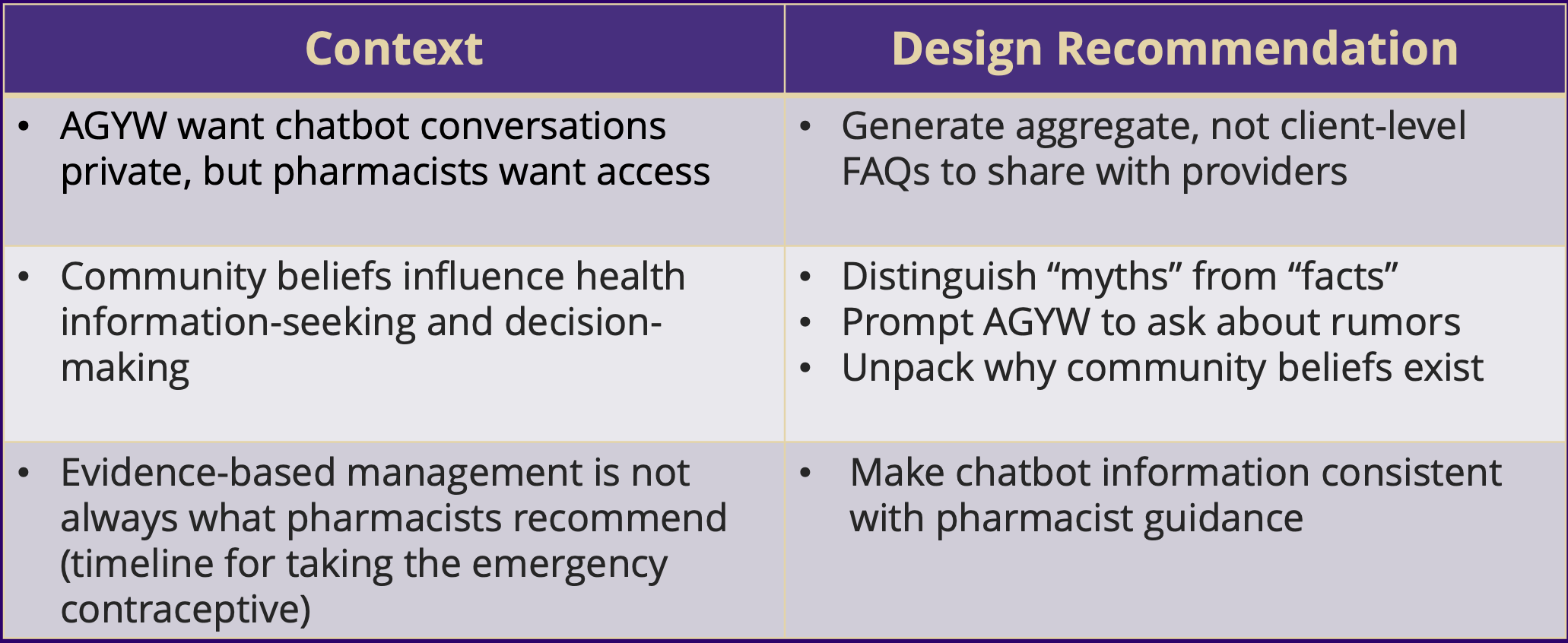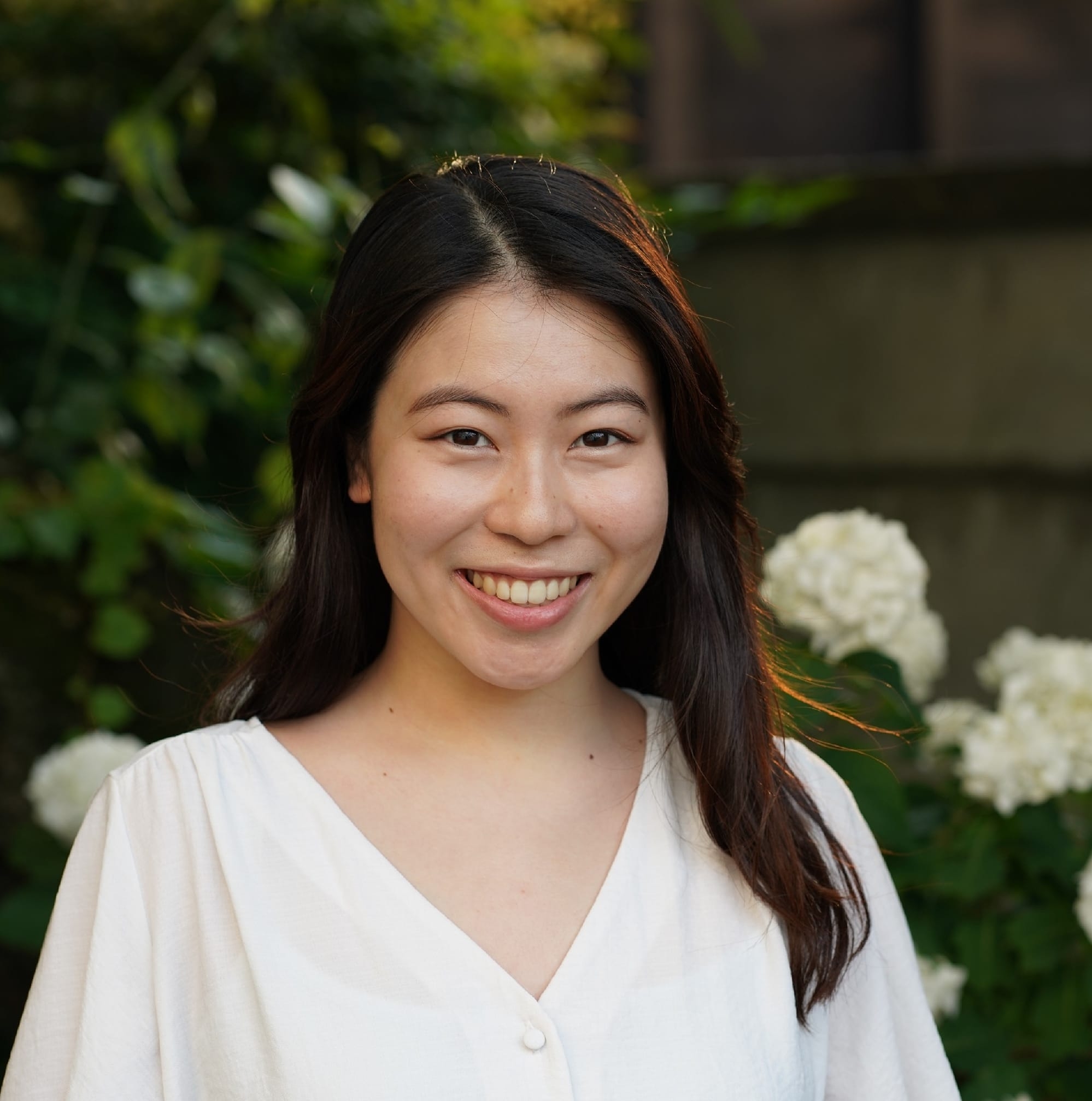Designing Chatbots for Sensitive Medical Contexts
Project Overview
Background: This is follow-on work from this project. Pharmacies are a key access point for contraceptive services for adolescent girls and young women (AGYW) aged 15-24 in Kenya, but pharmacy providers have limited capacity to offer AGYW-specific counseling.
Problem: Formative work suggested that while the contraceptive decision-support app has potential, AGYW were hesitant to ask questions to the pharmacist after using the app.
Goal: Understand possible and preferable designs for chatbots in contraceptive care in Kenyan pharmacies.
Approach:
- Develop speculative chatbot prototypes.
- Lead co-design workshops with AGYW and pharmacy staff in Kenya.
- Identify design guidelines.
- Test technical feasibility of design guidelines by building functional chatbots.
Speculative Chatbot Prototypes
Speculative design provides the advantage of exploring possible future scenarios for emerging technologies even if stakeholders are unfamiliar with these technologies.
Our low-fidelity prototypes were informed by our understanding that AGYW have varied digital and language literacy levels.
- Text Chatbot: user types a question or response into a textbox to receive a text-based response.
- Buttons Chatbot: user directs the conversation by choosing an option from a set of predefined topics.
- Avatar Chatbot: user gives voice commands and chatbot provides audio responses.
Text Chatbot
Button Chatbot
Avatar Chatbot
Co-Design Workshops in Kisumu, Kenya
We conducted co-design workshops with 36 AGYW and 12 pharmacy staff in Kisumu, Kenya. Workshop activities included:
- Journey mapping: Visualized the entire pharmacy visit experience, identifying pain points and moments of joy.
- App engagement and discussion: Engaged with the contraceptive decision-support app.
- Chatbot prototype feedback: Prototypes shown and used as design probes to discuss what partiicpants liked, did not like, and wanted to change .
- Chatbot ideation: Discussion and sketching of ideal chatbots.
Key Findings
- Chatbots offer a safe space. Participants agreed that chatbots offer a non-judgmental space to ask questions and get unbiased information.
- Navigating informational boundaries. AGYW wanted to ask the chatbot everything, but pharmacists wanted boundaries (e.g., abortion should not be asked to a chatbot).
- Tensions between chatbot conversation privacy and utility. AGYW wanted to ask the chatbot everything, but pharmacists wanted to access conversations to understand the AGYW and guide them in decision-making.
Design Recommendations for Chatbots in Sensitive Medical Contexts

